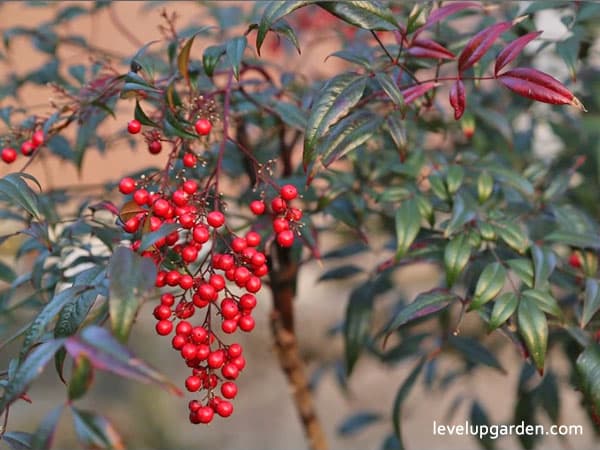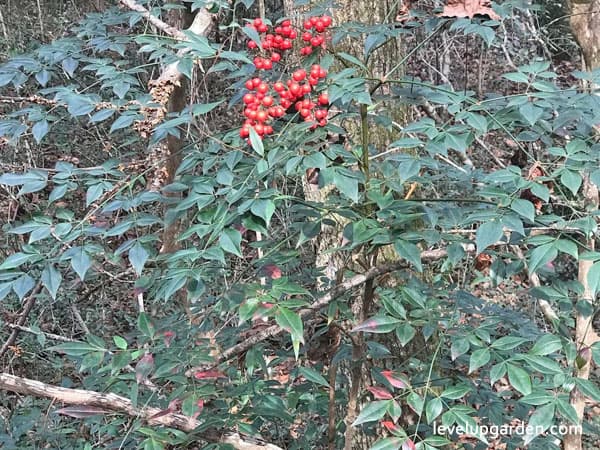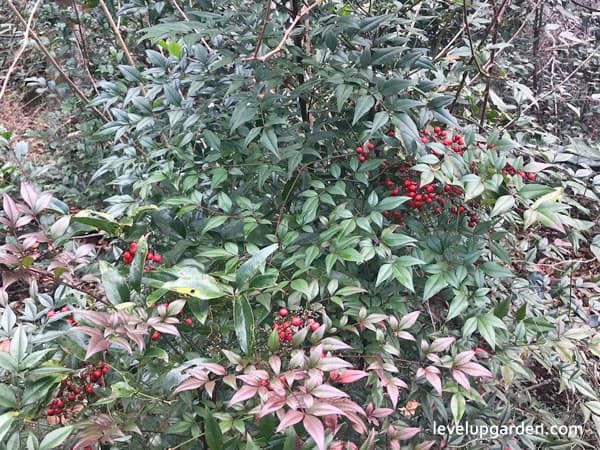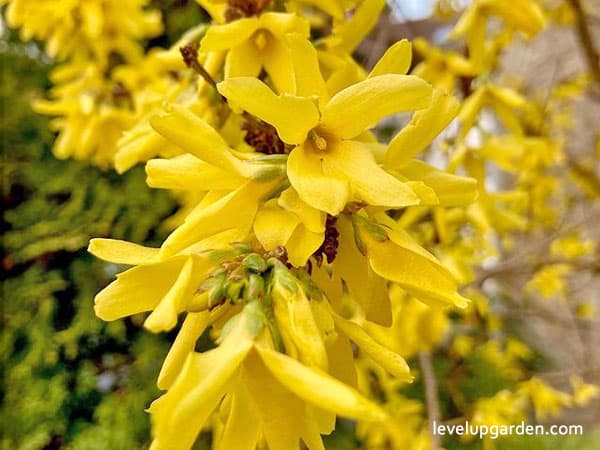Nandina Domestica is a flowering tree of the Asteraceae family that grows wild in East Asia from the Himalayas to Japan and is commonly called Nandina, Heavenly Bamboo, Sacred Bamboo, native to East Asia from the Himalayas to Japan and is the only plant in the monotypic genus Nandina. Many varieties of Nandina are widely cultivated in gardens as ornamental plants, with bright red leaves in the cool season and attractive new leaves in the spring. Although popular as an ornamental shrub, the fruits are toxic to birds, especially at the end of winter when other food sources are scarce.

Before growing them, what do you know about Heavenly Bamboo (Nandina Domestica)? Learn about Sacred Bamboo, its profile, pruning, use, the growing and caring conditions it needs, and where to buy the plant at a reasonable price with high quality in this article.
I. Heavenly Bamboo Profile
| Common Names | Heavenly bamboo, nandina, Sacred Bamboo |
| Botanical Name | Nandina Domestica |
| Native Area | Eastern Asia |
| Hardiness Zones | 6 – 9 |
| Family | Ranunculaceae |
| Plant Type | Shrubs |
| Sun Exposure | Full Sun, Partial Sun |
| Height | 4′ – 8′ |
| Width | 2′ – 4′ |
| Spacing | 24″ – 48″ |
| Soil Type | Chalk, Clay, Loam, Sand |
| Soil pH | Acid, Alkaline, Neutral |
| Soil pH | 3.7 – 6.4 |
| Bloom Time | Spring |
| Flower Color | Cream, white |
| Water Needs | Average |
| Maintenance | Low |
II. Appearance
Fruit: It produces bright red berries in the fall in a terminal pattern, which can be enjoyed through the winter. The size is less than 1 inch.
Flower: Flowers are white, 3-6 petals, less than 1 inch in size, growing in upright terminals in panicles 10-12 inches long. Flowers have prominent yellow anthers, blooms in late spring.
Leaves: Leaves alternate, 2 to 3 times pinnate compound, evergreen, 1 to 2 feet long. Leaves 1 to 3 inches long, elliptic to lanceolate, blue-green overall, scaly, turning red-green in winter.

II. Growing Conditions
Nandina grows in various soils, from sun to shade, but prefers moist, well-drained, fertile soil. It adapts well to extreme soil and sun conditions and has few pests and diseases. It is drought tolerant, shade tolerant, salt-tolerant, and especially resistant to deer damage.
- Light: Heavenly Bamboo can adapt to a wide range of light conditions, from full sun to partial shade. However, Heavenly Bamboo should be grown in full sun for the most vibrant colors.
- Soil: Heavenly Bamboo plants need a lot of water, but they grow quickly. A light shade is best, as too much sun can cause them to burn. You should also be sure to add some nutrients to your soil.
- Water: Heavenly Bamboo needs to be watered every day during its first year. Watering less frequently after that will ensure survival.
- Temperature and Humidity: Heavenly bamboos grow in cool weather. They need to be protected from frosty winds and prefer slightly moist soil. They also require a lot of water.
- Fertilizer: Heavenly Bamboo should be fertilized regularly to maintain its vibrant green color.
- Pests and Diseases: Heavenly bamboo is sensitive to pests. Cottony cushion scales attack the leaves, causing them to turn yellow and drop. Mealybugs cause leaves to become infected and wilt. Bacterial leaf scorches also occur.

IV. Varieties
Sacred Bamboo has several growers, most of which are dwarf varieties. The most popular growers include.
- Nandina Domestica ‘Firecracker’ or ‘Fire Power’, a dwarf variety with deep red leaves in winter.
- Nandina Domestica ‘Richmond’ is known for its abundant fruit and grows 5 feet tall.
- Nandina Domestica ‘Pygmea’ (or ‘Nana’) is characterized by its dense foliage and small size, growing only 2 to 4 feet tall. It does not produce much fruit.
V. Use
Heavenly Bamboo (Nandina Domestica) is a small evergreen or semi-evergreen shrub that adds multi-seasonal interest to the garden. In spring, small white flowers with golden anthers bloom in long arches at the tips of the branches. Nectar is abundant, attracting bees and other pollinators.

The flowers are followed by a profusion of green berries that ripen to bright red in the fall and winter. They mature from purple to soft green and can be enjoyed as ornamental against a backdrop of lacy foliage that turns from purple to reddish-purple in the fall. Heavenly Bamboo is one of the hardiest and most adaptable plants, and its fruiting branches provide a pleasant vertical accent.
- The root and stem have antitussive, antirheumatic, astringent, antifebrile, stomachic, and tonic properties.
- A decoction is used for influenza fever, acute bronchitis, whooping cough, indigestion, acute gastroenteritis, alveolar abscess, bone and muscle pain, and trauma.
- It is especially effective for coughs in children.
VI. Why should you grow Heavenly Bamboo plants?
In all four seasons, Heavenly Bamboo (Nandina) trees radiate a vibrant array of beautiful colors from cherry to royal purple. It produces delicate white flowers in summer and bright red berries in fall.
It is suitable for both sun and shade. For the most vibrant color, plant in direct sunlight. The trees can also be planted in the shade for more vibrant colors.

VII. FAQs
Are the heavenly flowers growing fast?
Heavenly Bamboo is a relatively slow-growing shrub, so it is easy to underestimate the space required for mature bamboo. Most heavenly bamboos will be 8 feet tall and 2-5 feet wide, and are more likely to overshadow or compete with less assertive plants in the landscape.
Is heavenly bamboo an invasive plant?
According to the USDA, it is now classified as an invasive plant and can spread easily by suckers, rhizomes, and seeds from the fruit.
Are nandina berries toxic to dogs?
The ASPCA website warns that this plant is toxic to dogs, cats, horses, and grazing animals. It is generally considered non-toxic to humans. Just keep in mind that once you have a Nandina, you are in it for the long haul.







